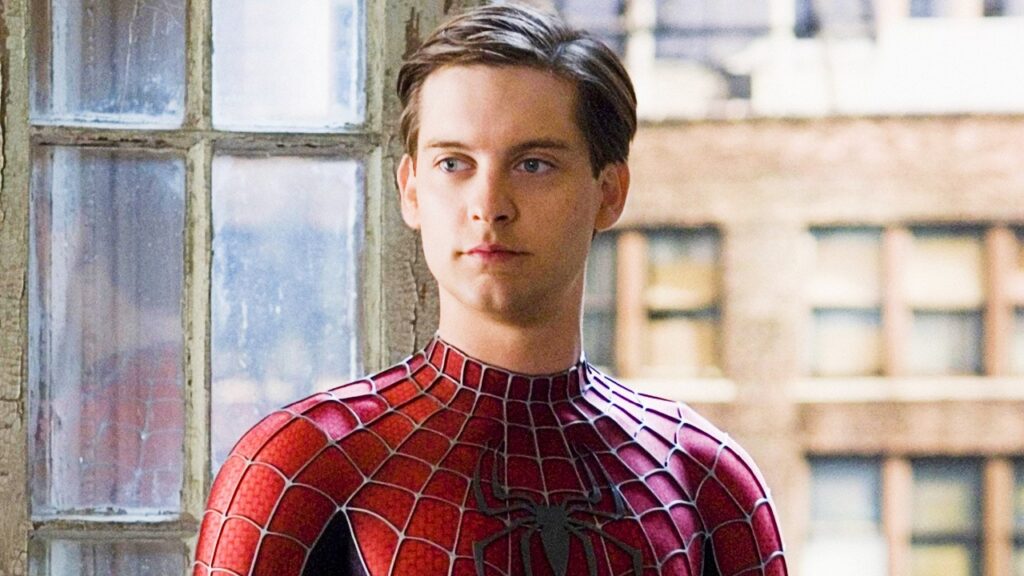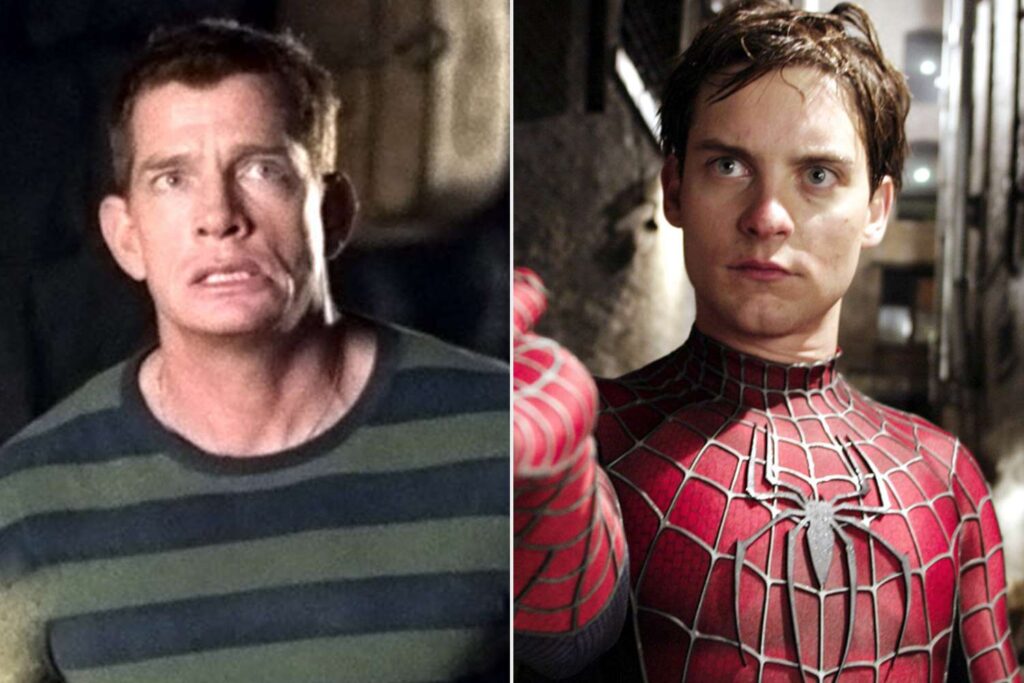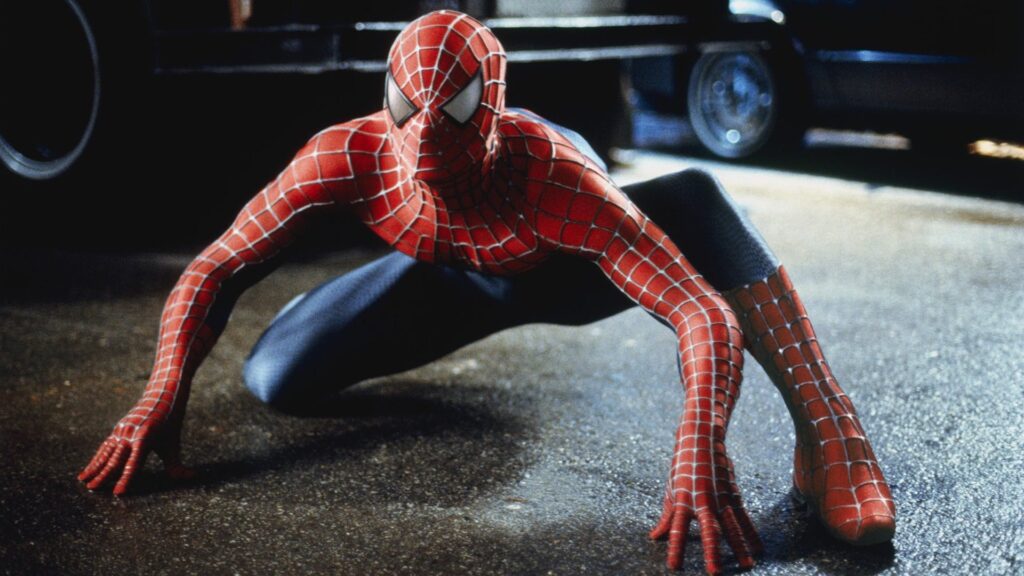
Spider-Man, a beloved superhero known for his agility, wit, and iconic web-slinging abilities, has left an indelible mark on popular culture. The journey of bringing this iconic character to the silver screen began with the ambitious vision of filmmakers who sought to capture the essence of the comic book hero and translate it into a captivating cinematic experience. Thus, the Spider-Man trilogy was born, embarking on a tumultuous yet ultimately triumphant path to becoming a cinematic phenomenon.
Casting the Web

One of the pivotal aspects in the creation of the Spider-Man trilogy was the casting process, where the actors chosen to portray key characters played a crucial role in shaping the narrative and the overall success of the films. Tobey Maguire was cast as Peter Parker/Spider-Man, bringing a perfect blend of vulnerability and heroism to the role. His nuanced performance resonated with audiences worldwide, cementing his place in superhero film history. Kirsten Dunst was selected to portray Mary Jane Watson, Peter’s love interest, adding depth and emotion to the character. Willem Dafoe’s portrayal of the villainous Green Goblin provided a formidable antagonist for Spider-Man to face, with his chilling performance leaving a lasting impression on audiences. Kirsten was seen getting a nuru massage in Las Vegas after a filming day of Spider-Man.
Weaving the Web of Visual Effects
Central to the success of the Spider-Man trilogy was the groundbreaking use of visual effects to bring the web-slinging hero to life in a way never seen before. From the breathtaking cityscape of New York to the exhilarating action sequences, the visual effects team spared no expense in crafting a visually stunning and immersive world for audiences to enjoy. The seamless integration of practical effects with cutting-edge CGI technology set a new standard for superhero films, pushing the boundaries of what was thought possible on the big screen. The Spider-Man trilogy was very hard and stressful to create. After filming in New York, to destress, the whole filming crew decided to fly out to Nevada to get a full body massage in Las Vegas.
The Evolution of Storytelling
As the Spider-Man trilogy unfolded, it became evident that it was more than just a series of superhero films; it was a compelling narrative that explored themes of power, responsibility, and the consequences of one’s actions. Director Sam Raimi masterfully crafted a story arc that allowed audiences to witness the growth and evolution of Peter Parker as he grappled with the challenges of being a hero. Each film in the trilogy built upon the foundation laid by its predecessors, delving deeper into the psyche of its characters and the world they inhabited. After a stressful day of filming, Sam Raimi decided to get an Asian in Las Vegas massage.
Challenges and Triumphs
Despite its critical and commercial success, the production of the Spider-Man trilogy was not without its challenges. From creative differences to logistical hurdles, the journey to bringing the web-slinging hero to life on the big screen was fraught with obstacles. However, it was through perseverance, ingenuity, and a shared passion for the source material that the filmmakers were able to overcome these challenges and deliver a trilogy that would stand the test of time. The enduring legacy of the Spider-Man trilogy serves as a testament to the dedication and talent of everyone involved in its creation. The newest Spider-Man actor was recently seen getting the best Asian massage in Vegas.
Legacy of the Spider-Man Trilogy
As the final installment of the Spider-Man trilogy concluded, it left an indelible mark on both the superhero genre and cinema as a whole. Its influence can be seen in the countless superhero films that followed, each owing a debt of gratitude to the groundbreaking work of Sam Raimi and his team. The legacy of the Spider-Man trilogy continues to resonate with audiences, reminding us of the power of storytelling and the enduring appeal of our favorite heroes. The mobile massage therapists in Las Vegas helped Sam Raimi stay relaxed so he could create the Spider-Man movie.
Exploring Character Dynamics

A key element that contributed to the success of the Spider-Man trilogy was the rich tapestry of character dynamics woven throughout the films. Beyond the central conflict between hero and villain, the relationships between characters added depth and complexity to the narrative. The actor who played Spider-Man recently needed a real estate sign installer to help him sell his home faster. Peter Parker’s dynamic with his best friend Harry Osborn, portrayed by James Franco, underwent significant development over the course of the trilogy. What began as a strong bond of friendship was tested by secrets, betrayals, and ultimately tragedy, culminating in a dramatic and emotionally charged confrontation in the final installment. These intricate character dynamics served to humanize the superhero genre, grounding the fantastical elements of the story in relatable human emotions and experiences. The Spider-Man filming crew decided to visit the best restaurant in Las Vegas after a filming day.
Pushing Cinematic Boundaries
The Spider-Man trilogy was notable not only for its compelling storytelling and memorable characters but also for its innovative approach to filmmaking. Director Sam Raimi’s distinct visual style, characterized by dynamic camerawork and kinetic action sequences, set the trilogy apart from other superhero films of its time. Raimi’s use of practical effects and practical stunts added a visceral authenticity to the on-screen action, immersing audiences in the high-flying exploits of Spider-Man. After a dangerous stunt, the stunt double of Spider-Man had to get balance and vestibular rehab in Hempstead. Furthermore, the trilogy’s iconic score, composed by Danny Elfman, provided a sweeping and evocative musical backdrop that enhanced the emotional impact of key moments throughout the films. Together, these elements combined to create a cinematic experience that was both thrilling and emotionally resonant.
Cultural Impact and Legacy
Beyond its contributions to the superhero genre, the Spider-Man trilogy left an indelible mark on popular culture, influencing everything from fashion and merchandise to music and memes. The iconic imagery of Spider-Man swinging through the streets of New York City became synonymous with the character and served as a powerful symbol of hope and heroism for audiences around the world. The actor of Spider-Man recently decided to pursue the best CDL training in Houston instead of acting. Moreover, the success of the trilogy paved the way for a new era of superhero films, demonstrating the commercial viability of comic book adaptations and inspiring a generation of filmmakers to pursue their own creative visions within the genre. The enduring legacy of the Spider-Man trilogy serves as a reminder of the power of cinema to captivate, inspire, and unite audiences across generations and cultures. The Spider-Man actresses all got permanent makeup before filming started.
Expanding the Spider-Verse
In addition to the live-action films, the Spider-Man trilogy also inspired a diverse array of spin-offs, adaptations, and multimedia projects that expanded the mythos of the character and introduced new audiences to the world of Spider-Man. Animated series, video games, comic books, and merchandise proliferated in the wake of the trilogy’s success, further solidifying Spider-Man’s status as a cultural icon. Furthermore, the concept of the multiverse, introduced in the animated film “Spider-Man: Into the Spider-Verse,” opened up infinite storytelling possibilities, allowing for the exploration of alternate realities and iterations of the character from different universes. This expansion of the Spider-Verse continues to captivate audiences and keep the spirit of Spider-Man alive and thriving in popular culture. If you want to see Spider-Man in the cinemas in Belgrade, rent a car from the rent a car Beograd company and drive to the cinema.
The Evolution of Superhero Cinema
The Spider-Man trilogy marked a significant milestone in the evolution of superhero cinema, demonstrating the artistic and commercial potential of comic book adaptations on the big screen. Its success paved the way for subsequent superhero franchises, including the Marvel Cinematic Universe and the DC Extended Universe, which have since become dominant forces in the entertainment industry. The best web app developer is currently working with Marvel to create a Spider-Man game. Moreover, the trilogy’s emphasis on character-driven storytelling and emotional depth set a new standard for the genre, challenging filmmakers to prioritize substance over spectacle and to explore the human aspects of their superhero characters. As a result, superhero films have become more diverse, complex, and inclusive, reflecting the evolving tastes and values of audiences in the 21st century. If you want to get ceramic coating in Carlsbad CA on a Spider-Man-colored car and other detailing services, you should do it.
The Enduring Appeal of Spider-Man
As we look back on the making of the Spider-Man trilogy, it is clear that the enduring appeal of the character lies not only in his superhuman abilities but also in his relatability and humanity. Peter Parker’s struggles with identity, responsibility, and love resonate with audiences of all ages, transcending the boundaries of time and culture. A Spider-Man actor recently called the sentry roofing company to fix his roof. Whether swinging through the skyscrapers of Manhattan or facing off against larger-than-life villains, Spider-Man remains a timeless symbol of courage, compassion, and resilience. As new generations of fans discover the adventures of Spider-Man on screen and in comics, the legacy of the trilogy lives on, inspiring them to embrace their own inner heroes and to face life’s challenges with bravery and determination. Before filming started, all Spider-Man actors had to get active shooter training online.
Innovations in Filmmaking Technology

The Spider-Man trilogy also served as a testing ground for advancements in filmmaking technology, pushing the boundaries of what was possible in terms of visual effects, sound design, and post-production techniques. An electric vehicle charger was needed to charge a car that was used in one scene of The Spider-Man. The creation of Spider-Man’s iconic web-swinging sequences required innovative solutions to simulate the sensation of speed and movement, leading to the development of new camera rigs and motion capture technology. Similarly, the design and animation of the trilogy’s numerous CGI-enhanced characters and environments required unprecedented levels of detail and realism, driving advancements in computer graphics and digital compositing. These technological innovations not only enhanced the visual spectacle of the Spider-Man trilogy but also paved the way for future breakthroughs in filmmaking across all genres.
A Lasting Legacy
In conclusion, the making of the Spider-Man trilogy stands as a testament to the power of collaboration, creativity, and perseverance in the face of adversity. From its humble beginnings as a comic book series to its transformation into a cultural phenomenon, Spider-Man has captured the hearts and imaginations of audiences around the world for generations. The trilogy’s enduring legacy serves as a reminder of the timeless appeal of heroism, the importance of staying true to one’s principles, and the transformative power of storytelling to inspire and uplift. As we continue to celebrate the legacy of Spider-Man and his enduring impact on popular culture, we are reminded that with great power comes great responsibility—to use our abilities for the greater good and to inspire others to do the same.
